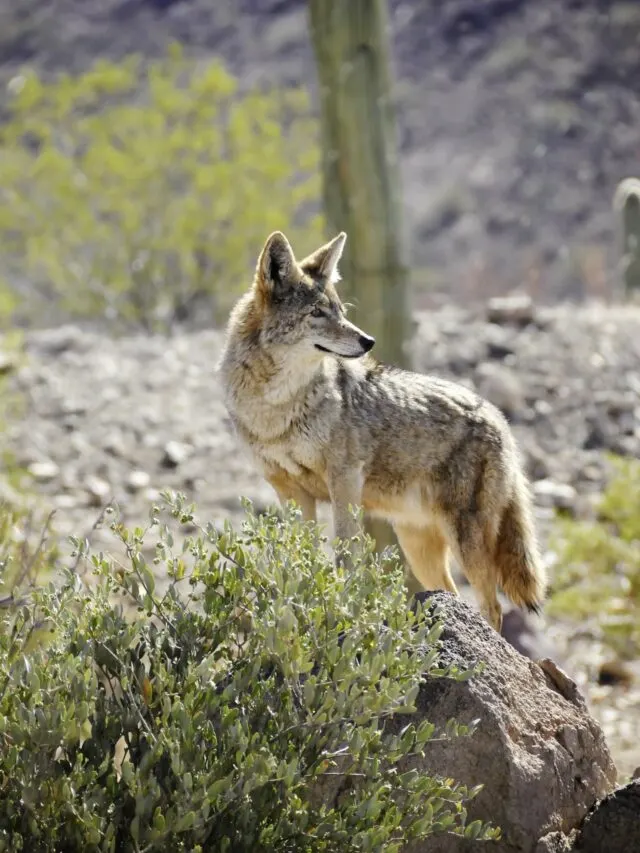Welcome to Fox vs Coyote.
Among the vast diversity of animals in the world, some animals resemble each other so much, like fox vs. coyote, that differentiating among them becomes problematic. Even the animals that belong to separate genera can be confused with each other.
Animals share most of the characters with each other, while they have few specific characters that differ widely.
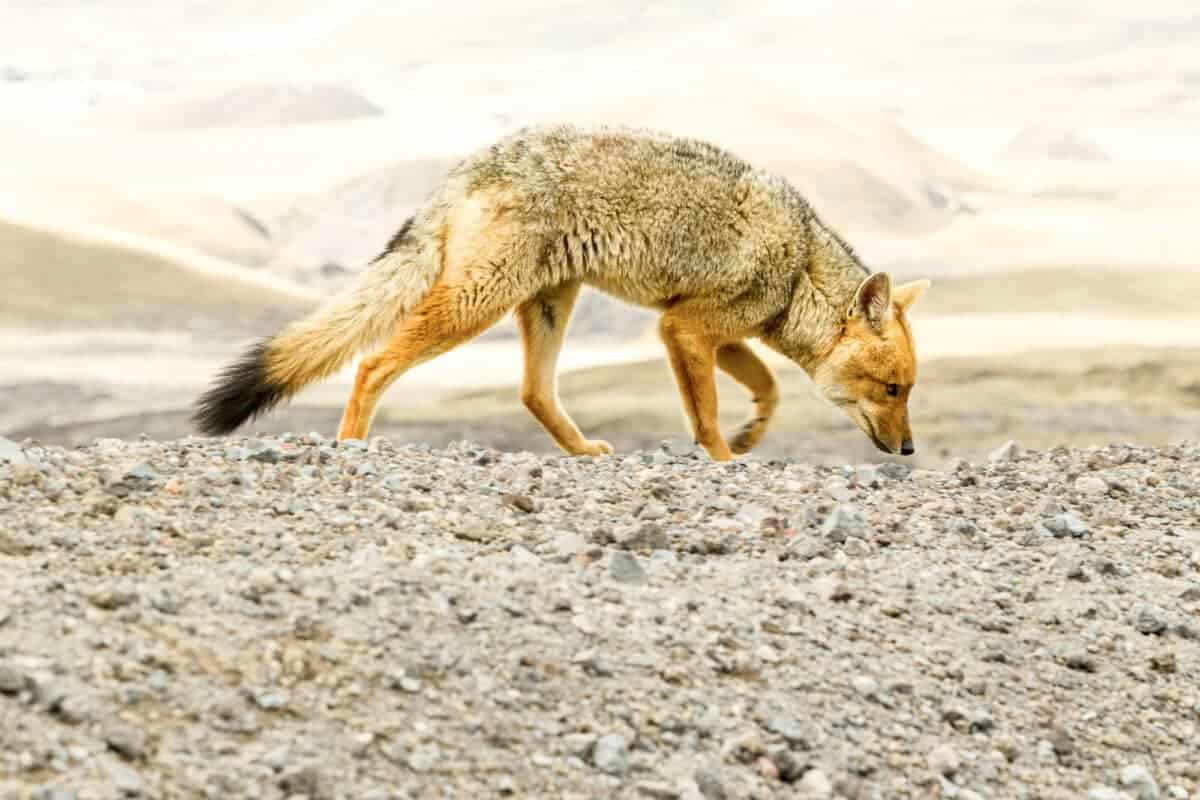
When someone looks at a fox and coyote for the first time, they can’t say whether it’s a coyote or a fox. So they end up with this confusion.
But no worries, today we will explain fox vs. coyote in detail so that you can say which one it is when you see a fox or coyote next time.
Let us begin!
Fox vs Coyote
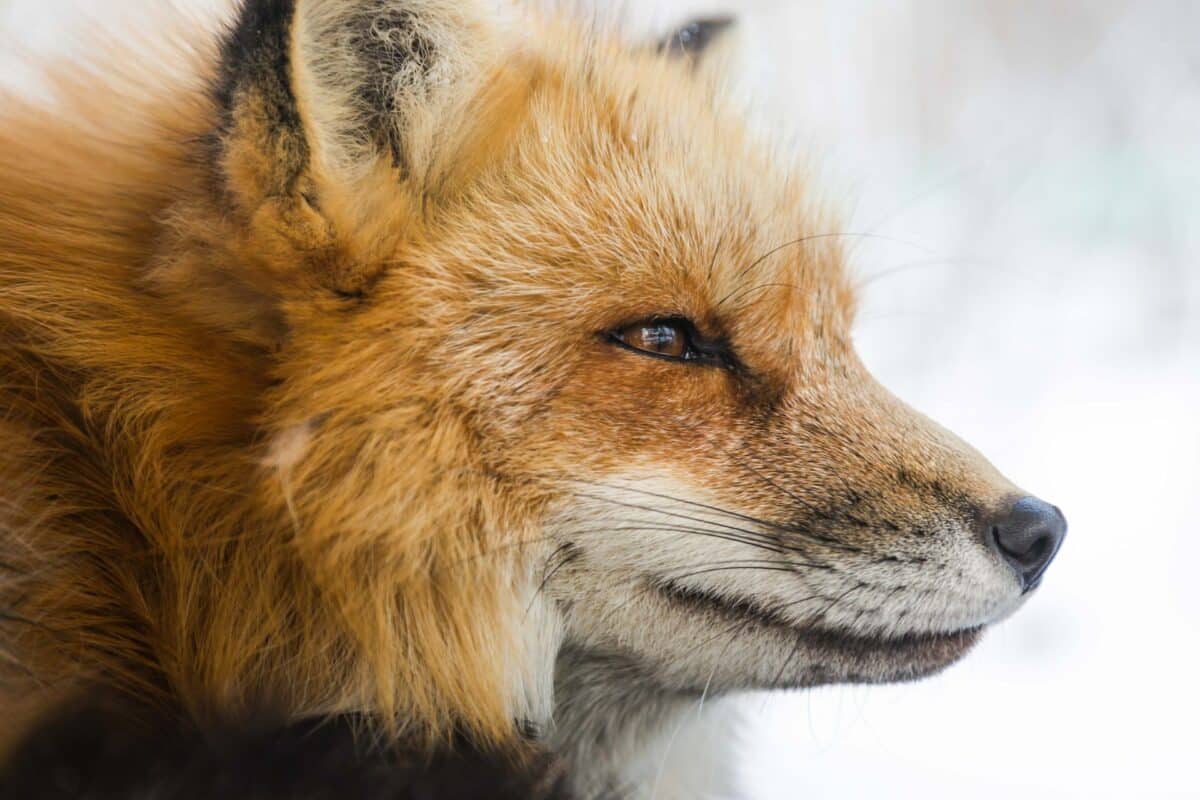
Below we have compared some of the most essential and prominent characters of fox and coyote to differentiate them easily.
| Fox | Coyote |
| 23 species throughout the world. | 19 subspecies around the globe |
| Have bushy tail. | Not a bushy tail. |
| Found in many regions of the world. | Found mainly in North America. |
| Lives mostly in solitary. | Occur in packs. |
| Small in size as compared to coyotes. | Larger in size. |
| Only prey is small animals. | Mostly prey small animals but also prey the larger animals. |
| 1 to 4 kg average weight. | 7 to 23 kg normal weight. |
| Coat color varies and consists of red, silver, gray and yellowish brown. | Coat color only occurs in gray shades. |
| Fox is less strong as compared to coyotes. | Coyote is stronger |
| Gestation duration is 51 to 53 days. | Gestation time is 63 days. |
| Only mates with partners in the same genus. | Also mate with dogs and wolves. |
Scientific Classification
Fox Scientific Classification
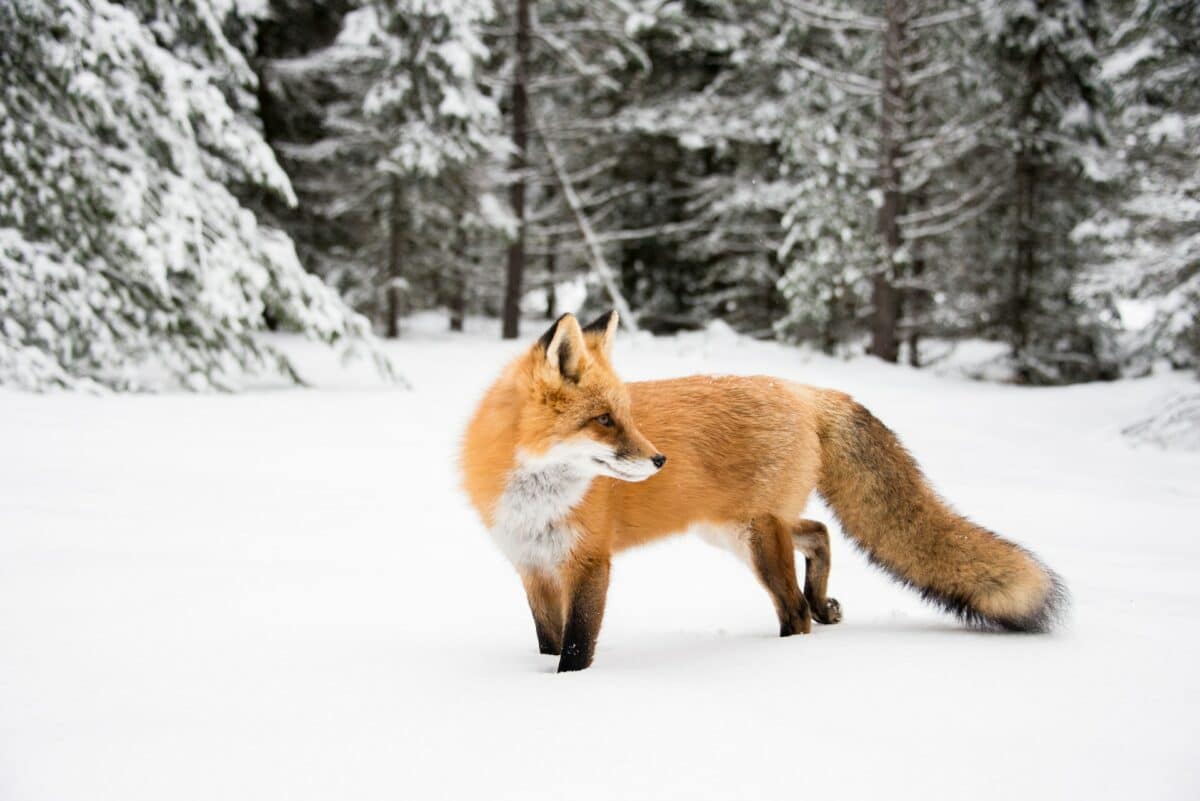
- Kingdom: Animalia
- Phylum: Chordata
- Class: Mammalia
- Order: Carnivora
- Family: Canidae
- Subfamily: Caninae
Coyote Scientific Classification
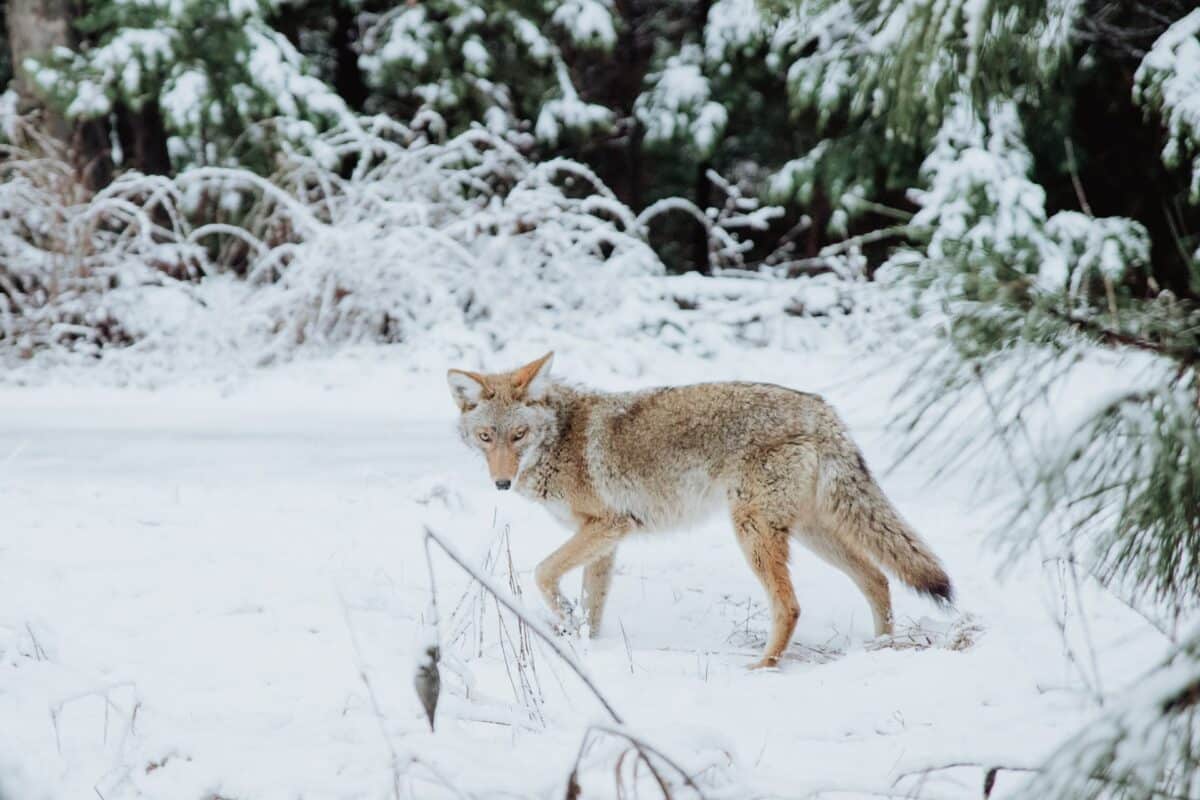
- Kingdom: Animalia
- Phylum: Chordata
- Class: Mammalia
- Order: Carnivora
- Family: Canidae
- Genus: Canis
- Species: C. latrans
#1 Diversity
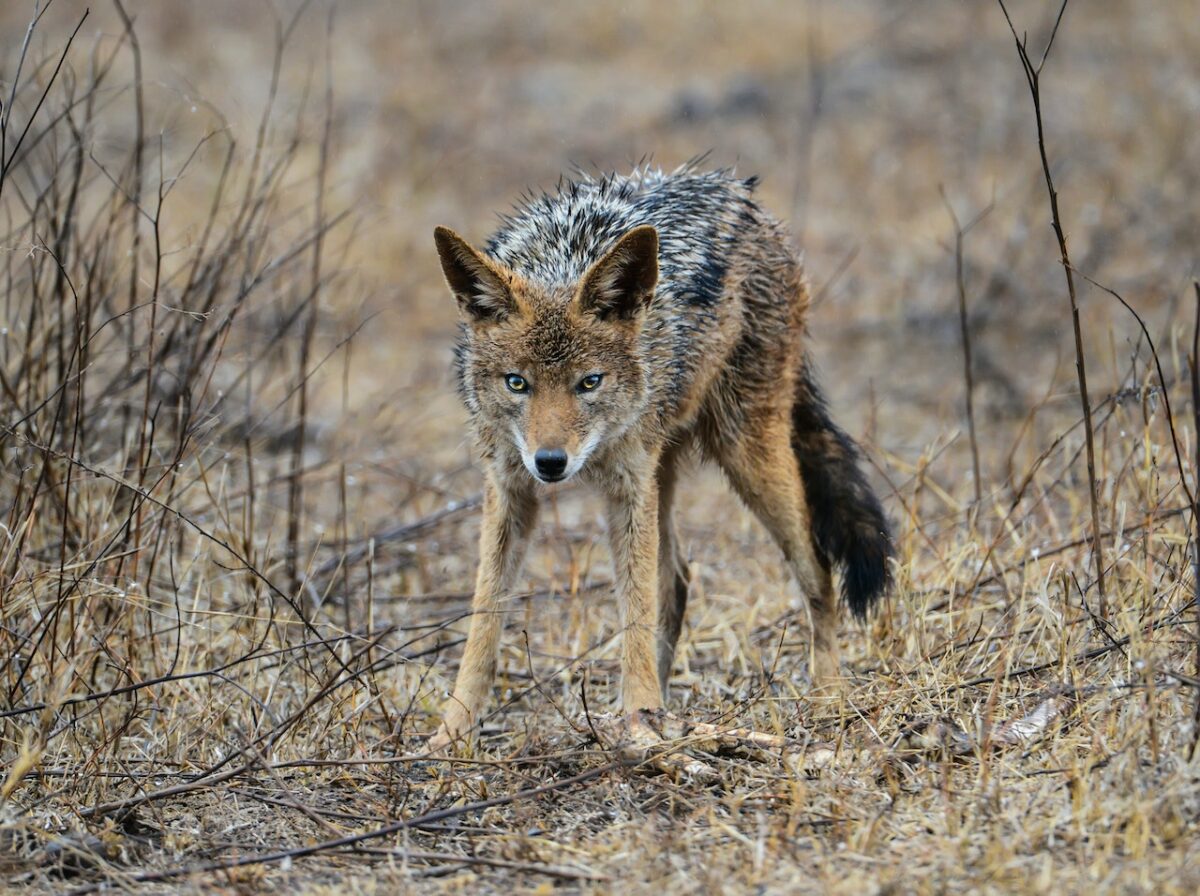
Fox Diversity
Throughout the world, there are 23 fox species. Among them, red and gray foxes are more common. They may occur in Canada, North America, Europe, South America, Africa, and Asia. This widely adaptable small animal inhabits various habitats such as deserts, cities, woods, mountains, and grasslands.
Coyote Diversity
Coyotes have a total of 19 subspecies that are present around the globe. They most commonly occur in deserts, mountains, and meadows.
#2 Length
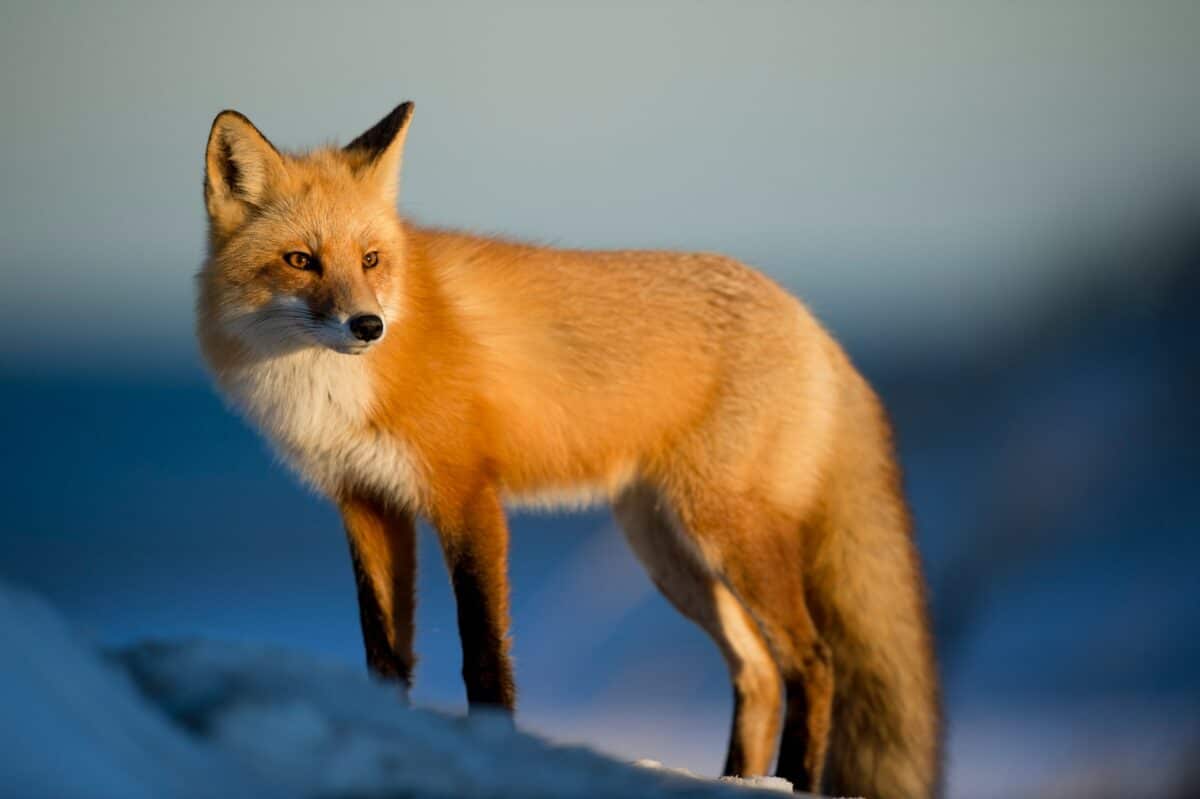
Fox Length
A regular fox has a length of about 1 to 5 feet with a tail included; if the tail is excluded, the size of the fox’s body is only one to three feet.
Coyote Length
Coyotes are longer than the fox and are 3 to 4.5 feet long, and when including the tail, the total length ranges between 3 to 5 feet.
#3 Weight
Fox Weight
The average weight of a fox is 1 to 4 kg (2 to 30Ibs) which differs according to the fox’s age.
Coyote Weight
A coyote weighs around 7 to 23 kg (15 to 50Ibs). As the coyote is longer than the fox, their weight is also more than a fox.
#4 Distribution
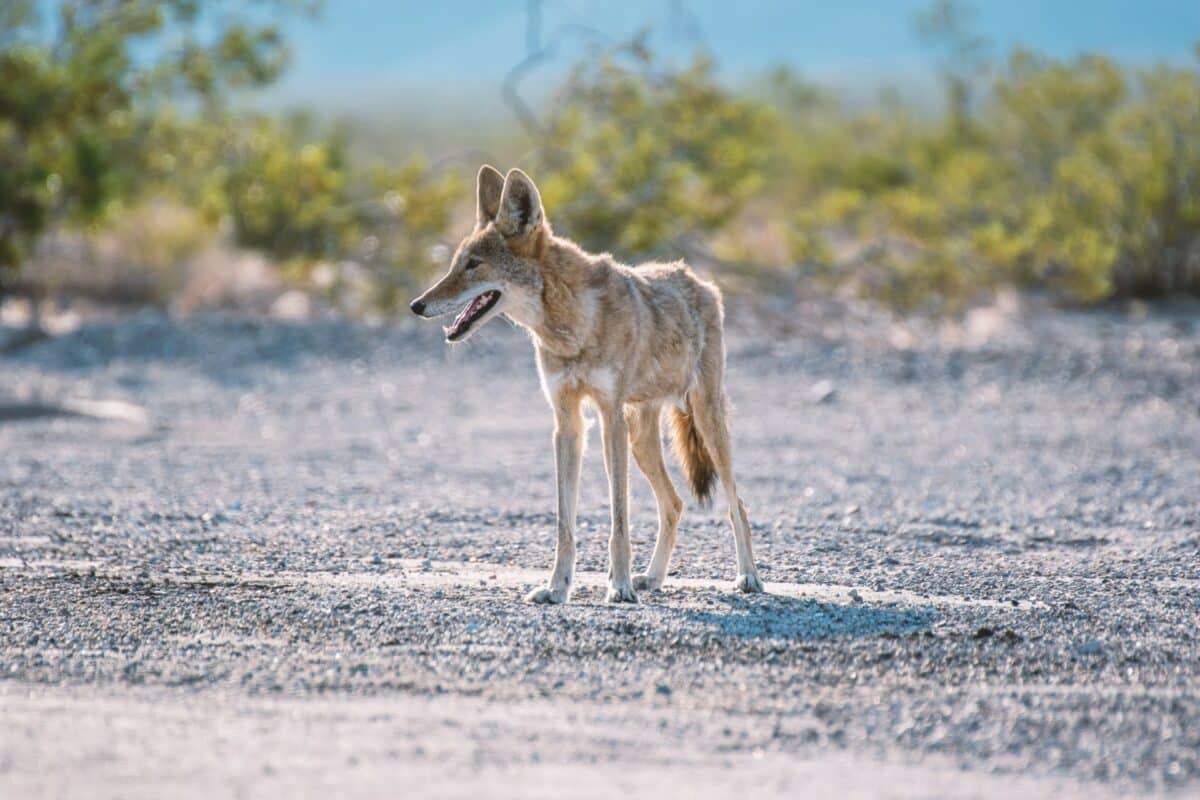
Fox Distribution
You can see the fox in most regions of the world, and their population is not limited to any particular area.
Coyote Distribution
Coyotes are most commonly found in North America, but it does not mean you can’t see a coyote anywhere else in the world.
So there is a high probability that if you are in North America, you will see a fox or a coyote. In contrast, if you are outside of North America, the most likely chances are that you are looking at a fox.
#5 Body Size
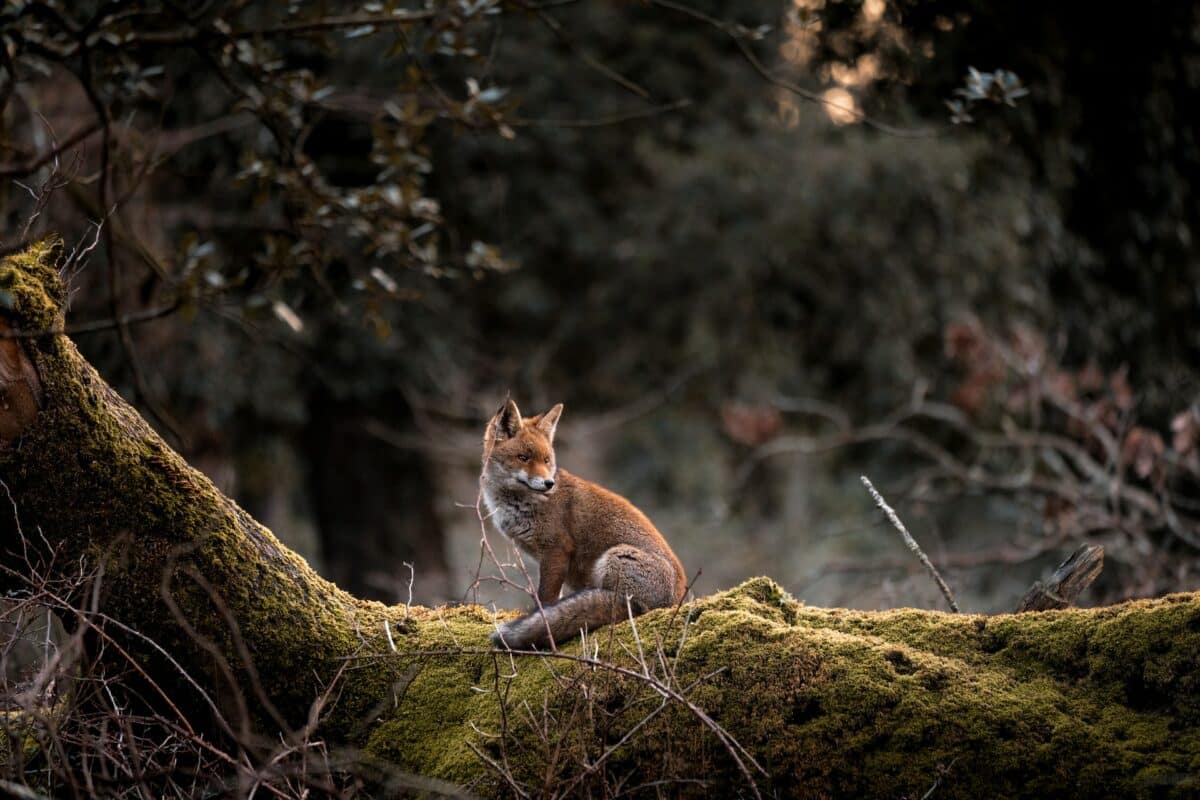
Fox Body
The fox and coyote also differ in size; from their body size, you can say which is a coyote and which is a fox.
Foxes have short legs and long bodies with big ears, and their body is tube-like and much more concise than the coyotes. They have thicker hair over their whole body, making them appear more prominent, but they are only the size of domestic cats.
Coyote Body
Coyotes have shorter legs with muscular bodies and ears according to their body size. Thus the coyote is much more prominent in body size than the fox. Their height exceeds 2 feet.
#6 Tail
Fox Tail
The fox’s tail is bushy and long, and the tail is sometimes as long as its whole body length. Sometimes fox tails are crowned with black or white tips.
The fox’s tail is thicker than the coyote’s tail.
Coyote Tail
The coyote’s tail is small compared to its total body size. Its tail is not bushy like that of a fox. And its tail is droopy when it runs. The coyote’s tail appears like that of a dog. A great difference if you look at the traits of Fox vs Coyote.
#7 Coat Color
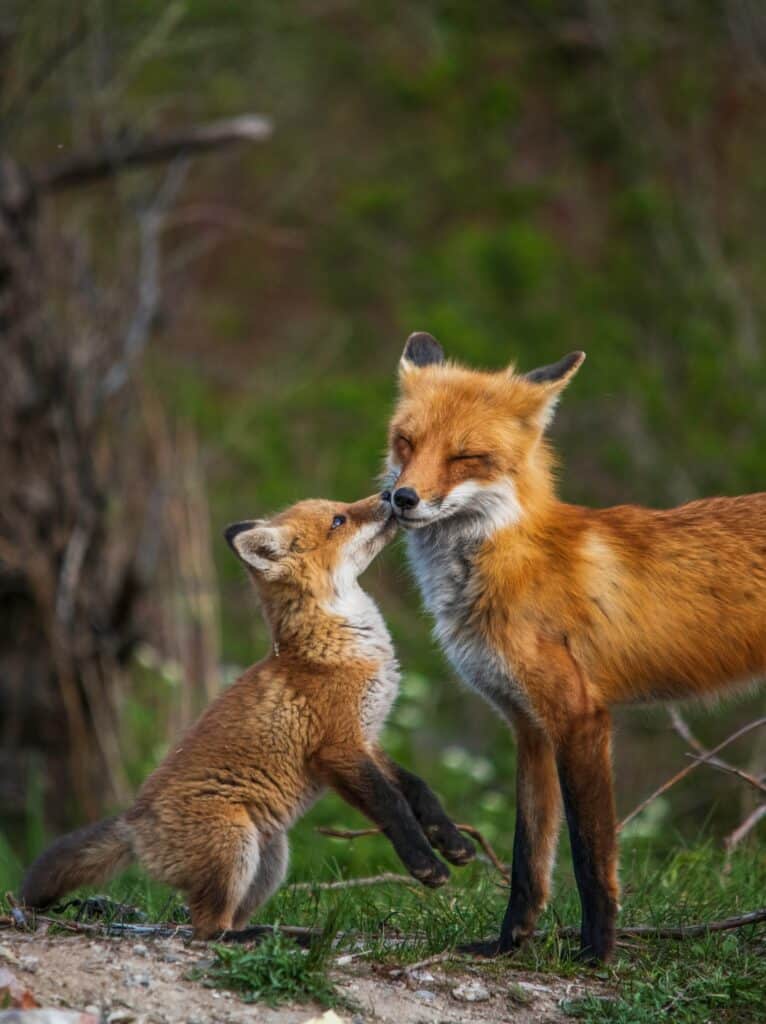
Fox Coat Color
The coat color of the fox varies greatly. Various fox species have different colors. Some fox species have red color while others have yellowish brown, silver, or gray color.
Also, the red fox has different color morphs, like blackish brown, silver, and gray. So one can get confused between the gray fox and the red fox with a gray color morph. And these both can be accidentally mistaken for coyotes.
Coyote Coat Color
Coyotes don’t have significant color differences. Coyotes have different gray shades scattered with red around their hind legs and sides.
#8 Safety And Aggressiveness
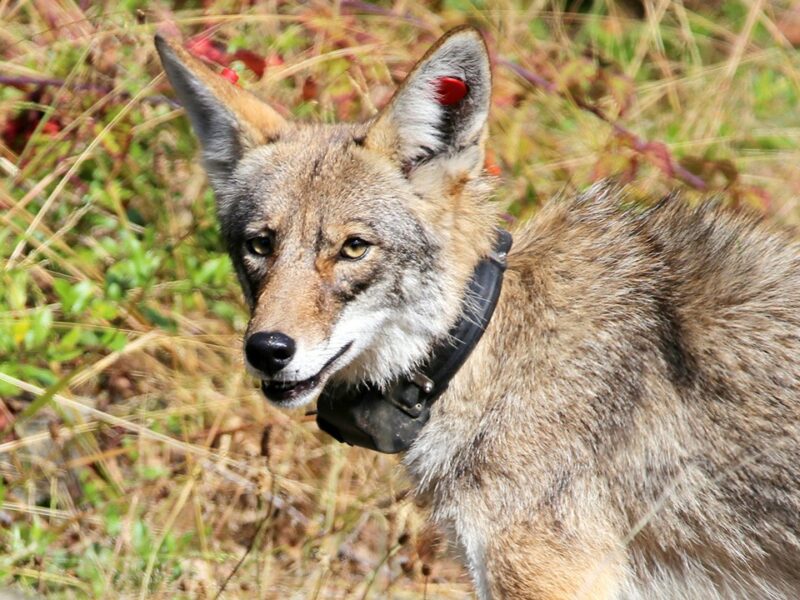
Fox Safety And Aggressiveness
Foxes’ nature doesn’t like fighting; therefore, it doesn’t stay to fight, which is a positive thing for humans because, in this way, it doesn’t cause harm to pets or children.
Also, foxes don’t attack humans and thus are not considered dangerous, but if the fox is rabid, it is a threat to humans, so better to keep yourself safe.
They only attack you when they feel danger from humans, and thus for their defense, they attack the other creature, whether it’s a human, dog, or cat.
Coyote Safety And Aggressiveness
Unlike foxes, coyotes benefit from human presence. They move into the residential area nearby and catch the small cats and dogs to enjoy eating them.
However, coyotes attacking humans is very rare. But still, it is advised not to try to play with the coyote if you come across one because it is a wild animal and can harm you.
#9 Habitat
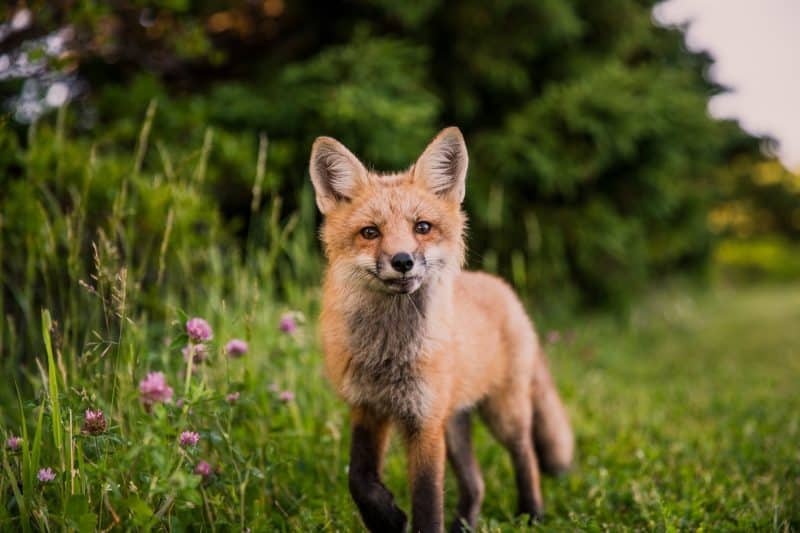
Fox Habitat
Foxes live in grasslands, forests, mountains, and deserts.
This tiny creature spends most of the time in the dense underground caves, and the holes are piped together through tunnels, letting the fox move around underground. Foxes use burrows for sleeping and storing food as well.
Coyote Habitat
Coyotes live above the ground and don’t mind converting the cities and residential areas into their home. Also, the coyotes use open spaces, covered or raised regions, for hiding. Unlike foxes, coyotes make their lodge in rock nodes or tree stubs. Coyotes also differ from foxes in how coyotes turn the caves that were constructed by other animals, like raccoons, into their homes.
A coyote’s presence near human residential areas is a threat to the local people as their pets are in danger all the time.
Sometimes the fox and coyote territories may overlap, which can cause an argument among them.
Marking Home range
The foxes and coyotes mark their homes with their urine to identify them and let the others not come to their territory. Also, the foxes and coyotes have scents in their paws, which they use by rubbing in the rocks and grounds to emit their odors. As a result, they make sure to let the other animals, through their visual markings and scents in the area, know that this den belongs to them.
#10 Food
Fox Food
Fox is a small animal; therefore, they prey on small animals like voles, mice, rats, rabbits, and moles. Sometimes they also eat the kitten but don’t prefer to eat it as it is not their favorite food.
Furthermore, foxes keep the leftover food for the next day as well.
Coyote Food
Coyotes’ diet also consists of the same food that the foxes eat: small animals, but they don’t limit themselves to small creatures. They also go preying on large animals like small deer, dogs, and livestock.
#12 Social Behavior
Fox Social Behavior
A fox likes to live in a burrow or den with a specially designed defined base and tunnel network. Fox is a solitary animal and often shares its zone with other immediate family members.
Foxes prefer to avoid playing with each other or running together; therefore, they only appear in the group sometimes.
Coyote Social Behavior
Coyotes are not as social as wolves but still live in packs with other family members and sometimes with non-family members as well. Coyotes sleep on the ground and use the den only in the mating season.
#13 Vocalizations
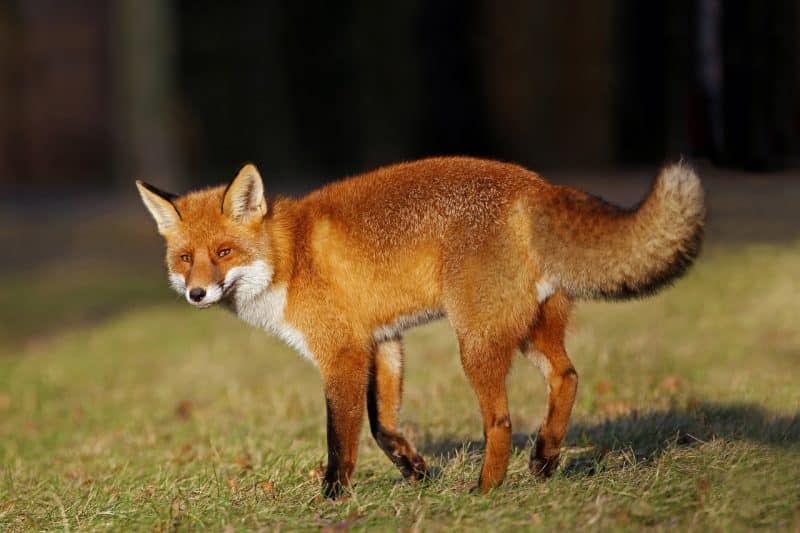
Fox Vocalizations
The fox makes howling noises and is easily understood by the yelping and whining high-pitched sound. Fox sounds significantly less like a dog or a wolf.
Fox sound is exciting; they differ much; you may hear two foxes vocalizing together but in very different manners.
Coyote Vocalizations
Among the world’s wild canines, coyotes are known for being the most vocal. The coyote’s vocal is easily identified as plaintive, long howls just like a wolf, increasing and reducing pitch dispersed with barks, yips, and yelps.
Thus one can easily distinguish the foxes and coyotes based on the sound they produce.
#14 Life Span
Fox Lifespan
Foxes have a lifespan of only 3 to 4 years when they live in the wild. However, if foxes live in captivity, their life span is between 10 to 14 years.
The life expectancy of various wild fox species is much lower than that of foxes that live in captivity.
Coyote Lifespan
The coyotes live only three years in this world when they are in the wild. In captivity, the coyote survives for about 13 to 15 years.
This shows that foxes and coyotes are older in captivity than wildlife.
#15 Predators
Fox Predators
The common predators of a fox include wolves, coyotes, bears, eagles, humans, and other large carnivores.
Coyote Predators
The coyote predators are tigers, mountain lions, bears, wolves, and humans.
#16 Mating
Fox Mating
The fox mating period starts in January and ends in march. And their gestation time is 51 to 53 days only.
The male and female foxes run and play together, and after mating, the male brings food from his burrow for the female fox. Their minor consists of 7 to 15 pups.
Coyote Mating
The mating season of coyotes is between February and March, but it varies according to their location.
In a pack of coyotes, only the alpha pair mate, and the remaining members of the pack, that are subordinates, play their role in raising the young coyotes.
Coyote females undergo a gestation time of 63 days and at a time give Birth to four young coyotes on average.
#17 Offsprings
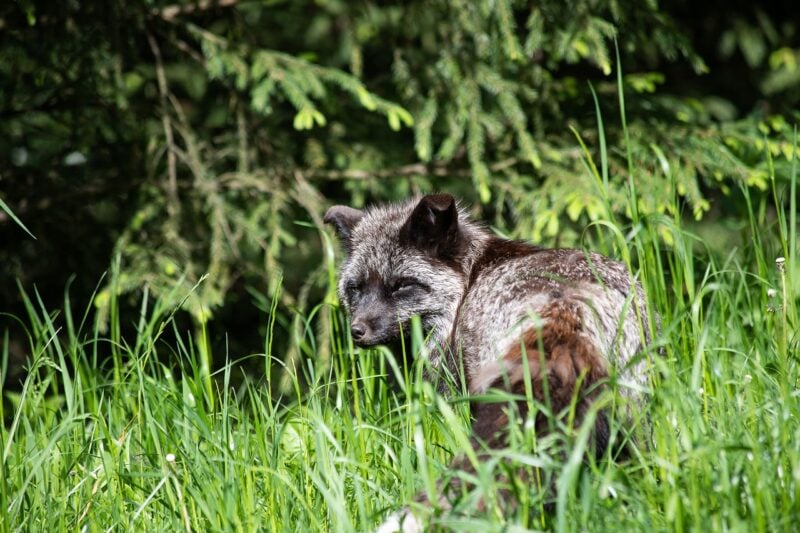
Fox Offsprings
The fox offspring are generally called cubs, kits, or pups.
Coyote Offsprings
Coyote offspring are called pups, but if a coyote mates with a wolf or dog, the young are called coywolves and coydogs.
#18 Poop
Fox Poop
The fox poop is only two inches in length.
The coyote and fox poop are similar because they have almost identical diets.
Coyote Poop
Coyote scat differs from the fox and is more than 4 inches long. And resembles a knotted rope with several fragments. Their poop is tubular and significant as compared to that of foxes.
Which Is More Dangerous, Coyote Or Fox?
Coyotes are more harmful as compared to the fox. Foxes don’t prey on your pets, but coyotes do, and the coyotes eat your pets within minutes. But keep in mind if the fox is starving, it will attack the cat if it comes across it.
As we already mentioned, coyotes attack large animals as well. Therefore, coyotes are a severe threat to livestock.
In short, being around foxes is more dangerous than coyotes, which are more complicated.
Strength Of Fox Vs. Coyote
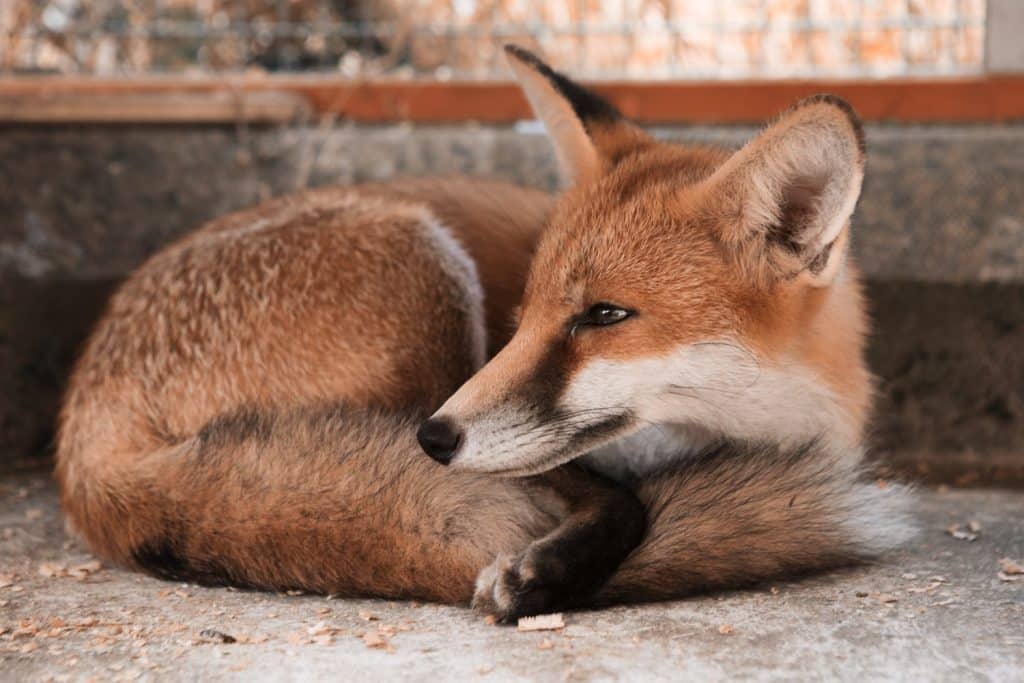
Fox is less robust than coyotes because it is more prominent in size, and its long and large legs provide more strength to coyotes. Therefore, coyotes are considered stronger than foxes.
Frequently Asked Questions on Fox vs Coyote
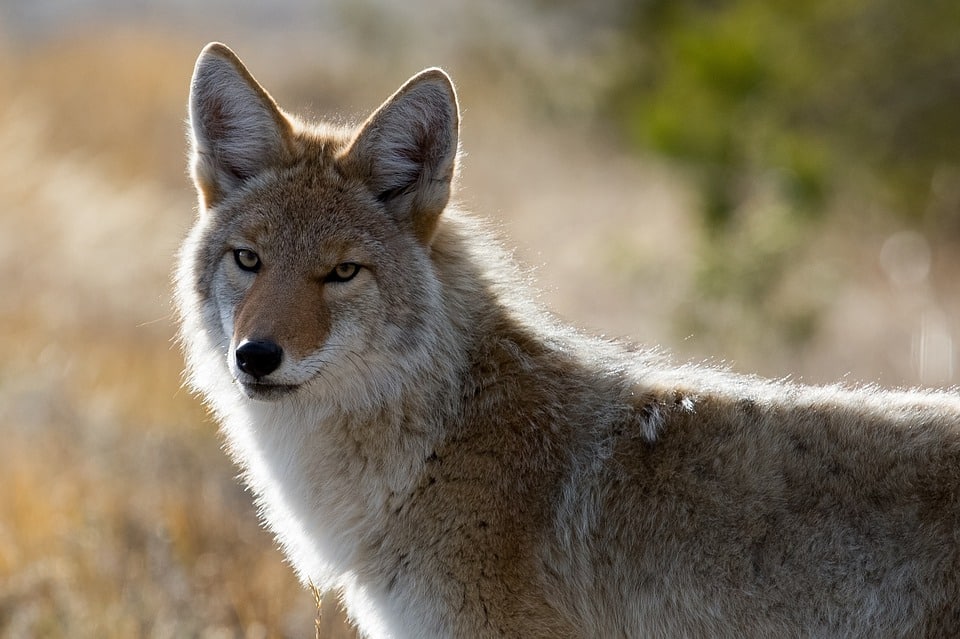
Are foxes aggressive?
Fox nature opts to flee and not to fight; therefore, foxes don’t attack unless they feel danger or threat. If rabid, a fox can be aggressive; although such foxes are rare, the chances are still possible.
Can a coyote beat a fox?
It is observed in rural regions that coyotes sometimes kill the red foxes in order to limit the fox population.
Are foxes afraid of coyotes?
The coyotes and foxes are natural enemies that, show that if any of them enter the territory of others, they will indeed fight. None of them likes to live in a region where the other also lives.
How much bigger is a coyote than a fox?
Coyotes are larger than foxes, which is evident from their average weight. The standard weight of a coyote is 35 pounds, whereas the fox weighs only 8 to 15 pounds. Although foxes appear large, it is only their furs that make them appear large and fluffier.
Can a fox and coyote mate?
Foxes and coyotes belong to different genera; therefore, they don’t mate with each other. However, the coyote mates with wolves and dogs.
The Final Words
Finally, after reading this article, you can easily distinguish the two closely resembling animals and can tell in detail the fox vs. coyote differences and similarities.
Fox and coyotes belong to a different genus, but the fox has a variety of coat colors, whereas the coyote coat color only appears in gray shades. The fox seems to be found throughout the world, but the coyotes mainly occur in North America.
A fox only lives in the dens it digs by itself and likes to live in solitarily. Coyotes live above the ground and near residential areas and the caves that other animals create. Coyotes want to live in packs.
The list of fox and coyote character differences is long, but understanding them is easy, and once you learn them, you can readily say that the one appearing most often near your residence is a fox or coyote.
Have you ever come across a coyote or fox? Were you able to tell what it is? A coyote or fox?
If you enjoyed this article, you’d also like our comparison of the White Tiger Vs. Black Bear. Also, have a look at our other Animal Comparison articles.
Join our Forum for free today!

- These are The 5 Largest Great White Sharks Ever Recorded - July 19, 2024
- The Surprising Benefits of Big Game Hunting - July 18, 2024
- $100k+ Hunting Experiences The Most Expensive Animals to Pursue - July 17, 2024

